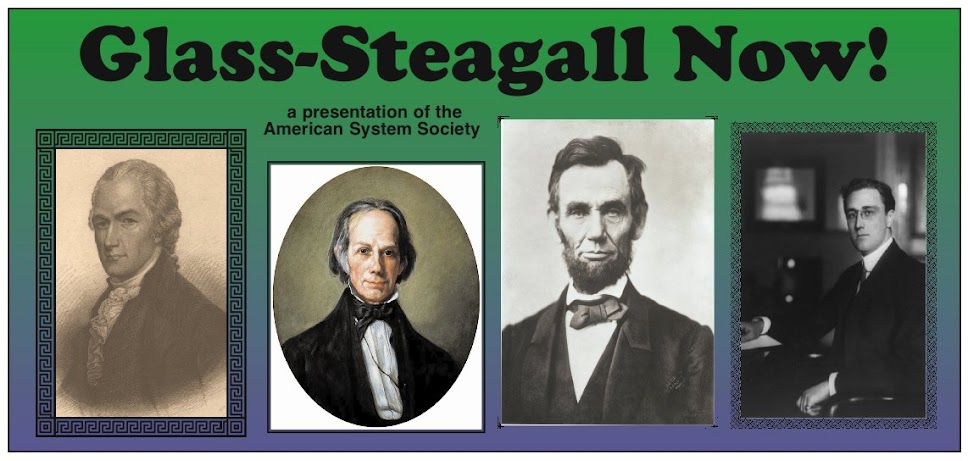War Veteran’s Fund Losses Explain Glass-Steagall
Put aside the tired arguments about whether the law’s repeal in 1999 caused the crisis. It did help banks deemed too big to fail get larger, but the crisis had no single proximate cause. We would have systemically dangerous financial institutions even if the law had stayed in place.
There’s a better argument for separating securities firms from commercial banks: to protect consumers. The banking industry has a long history of preying on unsophisticated depositors by selling them garbage investments without regard to suitability. This was a big reason Glass-Steagall was originally enacted.
Consider the $61 billion in settlements between large banks and the Securities and Exchange Commission over sales of auction-rate securities, the market for which collapsed in early 2008. Citigroup Inc., Bank of America Corp. and other banks told customers the securities were safe, highly liquid investments comparable to money-market funds. They weren’t.
Cross Selling
At Wachovia Corp., the SEC said bank employees helped recruit retail depositors for the investments. Wachovia, which was bought by Wells Fargo & Co. (WFC) in 2008, later agreed to repurchase $7 billion of the securities. Regulators in Washington state made similar findings about Wells Fargo as part of a $1.3 billion settlement in 2009, saying the bank and its investment divisions “engaged in cross-selling in connection with ARS sales.”Cross-selling junk to mom and pop depositors wasn’t limited to auction-rate securities. Last year the Memphis, Tennessee- based brokerage Morgan Keegan & Co. agreed to a $200 million settlement with state and federal securities regulators over seven mutual funds that lost $1.5 billion in 2007 and 2008. Morgan Keegan brokers sold the proprietary bond funds to more than 30,000 account holders. The SEC said the funds’ managers mismarked their asset values.
Morgan Keegan, then a subsidiary of Regions Financial Corp. (RF), “targeted Regions Bank depository customers with maturing certificates of deposits or other depository assets,” the Alabama Securities Commission and other state regulators said in their complaint. “More money could be made on broker- dealer fees than on the interest spread on interest-bearing deposits.”
One of those customers was Donald G. Smith, 66, who owns an auto-repair business in Hot Springs, Arkansas. Several years ago, he and his wife had a $96,000 Treasury bond. After it matured, he said a Regions financial adviser sent him to see a Morgan Keegan broker in the same branch.
He put the money in the funds the broker recommended, which soon crashed. The funds’ holdings included complex instruments with names like synthetic collateralized debt obligations, first-loss pieces and pooled trust preferred securities. Smith, a Vietnam War veteran and former oilfield worker, said he isn’t a sophisticated investor. His last year of school was eighth grade.
“I told her this was our nest egg, and we couldn’t afford to lose it,” he said, referring to the Morgan Keegan broker. Why did he trust Morgan Keegan? “It was right there inside the bank. One employee that I had trusted recommended me to another one.”
After the Smiths filed claims against Morgan Keegan, a securities-industry arbitration panel in August awarded them about $11,000, after hearings fees, which was a small fraction of their losses.
Wealth Destruction
Their experience is reminiscent of a story about another bank customer: Edgar D. Brown, of Pottsville, Pennsylvania. His testimony at the 1933 Senate Banking Committee hearings on the 1929 stock market crash was recounted in Michael Perino’s acclaimed book, “The Hellhound of Wall Street,” about the committee’s chief counsel, Ferdinand Pecora.In 1927, Brown responded to an advertisement by City Bank (now Citigroup) offering to help with financial advice. Brown, who had $100,000 in cash and government bonds from selling a theater chain, received a reply from a salesman at National City Co., City Bank’s securities affiliate.
The salesman said Brown should sell the bonds, borrow two or three times the money he had, and invest in securities the company recommended. “Brown took the company’s advice, insisting only that he wanted bonds instead of stock,” Perino wrote. “Other than that Brown trusted the company implicitly.”
Perino wrote: “Over the next year a welter of bonds came in and out of Brown’s portfolio. There were railroad bonds, utility bonds, and industrial bonds. Brown’s foreign bond holdings spanned the globe -- Peruvian and Chilean bonds; bonds from the State of Rio Grande do Sul in Brazil; Vienna and Budapest bonds; the bonds of the Belgian National Railroad, Norwegian Hydro, German General Electric, and the Saxon Public Works; Greek, Italian, and Irish bonds. They seemed to have only one thing in common -- they all went down in value.”
When Brown complained the next year, the salesman blamed Brown for insisting upon bonds. So Brown took his advice to buy stocks. “I bought,” Brown testified, “thousands of shares of stock on their suggestion which I did not know whether the companies they represented made cake, candy or automobiles.” Following the company’s advice was, he thought, “the only safe thing to do.” In 1929, at age 40, he lost almost everything.
Brown’s testimony helped persuade Congress to pass Glass- Steagall that same year. It was a good idea at the time to separate securities firms from commercial banks. It still is.
(Jonathan Weil is a Bloomberg View columnist. The opinions expressed are his own.)
To contact the writer of this article: Jonathan Weil in New York at jweil6@bloomberg.net.
To contact the editor responsible for this article: James Greiff at jgreiff@bloomberg.net.
